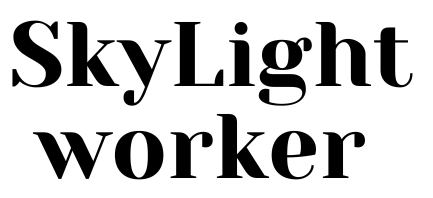Tarot Vs Oracle Cards: Deciphering the Mystical Differences
The Art of Reading Symbolon In Tarot Cards: Tips and Tricks
Are you fascinated by Tarot And Oracle cards world?
Get down to deciphering the meanings between Tarot vs Oracle Cards with me!
Tarot cards have been used for centuries as a tool for divination and self-reflection.
These cards are known for their rich symbolism and deep meanings.
Learning how to read tarot cards can be a powerful tool for personal growth and self-discovery.
In this article, we will explore the importance of learning how to read tarot cards and delve into the world of Symbolon in Tarot Cards.
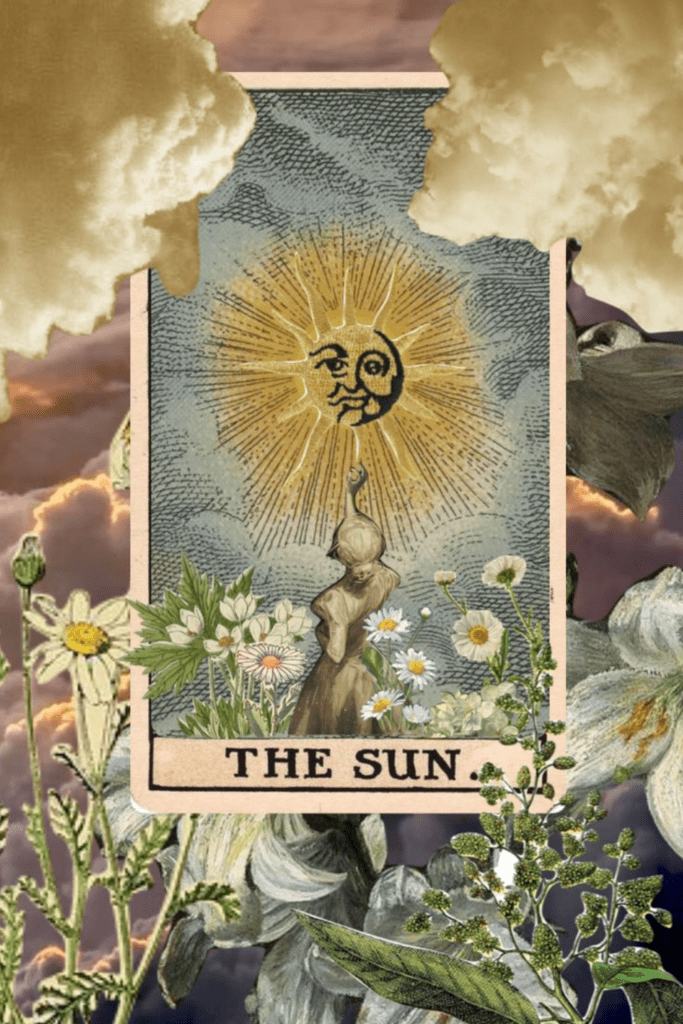
Understanding the Symbolism in Tarot Cards
Symbolism plays a crucial role in tarot cards. Each card is filled with symbols that hold deep meanings and messages.
These symbols can be interpreted in various ways, depending on the context of the reading and the intuition of the reader.
Common symbols found in tarot cards include animals, elements, colors, and numbers.
Interpreting symbols in tarot cards requires a deep understanding of their meanings and how they relate to each other.
For example, the symbol of a lion may represent strength and courage, while the symbol of a dove may represent peace and harmony.
By understanding these symbols and their associations, a tarot card reader can gain insight into the messages being conveyed by the cards.
The Importance of Intuition in Reading Tarot Cards
Intuition plays a vital role in reading tarot cards.
It is the ability to tap into your inner knowing and trust your instincts.
Intuition allows the reader to go beyond the surface-level meanings of the cards and delve into the deeper messages they hold.
Developing your intuition for tarot card readings takes time and practice. It involves learning to trust your gut feelings and allowing yourself to be guided by your inner wisdom.
Some ways to develop your intuition include meditation, journaling, and practising mindfulness.
By honing your intuition, you can enhance your tarot card readings and gain deeper insights into the messages being conveyed.
How to Choose the Right Tarot Deck for You
Choosing the right tarot deck is essential for a successful reading.
There are many factors to consider when selecting a tarot deck, including the artwork, symbolism, and personal connection.
It is important to choose a deck that resonates with you and speaks to your intuition.
Popular tarot decks include the Rider-Waite Tarot Deck, the Thoth Tarot Deck, and the Symbolon Tarot Cards.
Each deck has its unique features and symbolism.
Check out my Symbolon cards here:
The Rider-Waite Tarot Deck, for example, is known for its traditional imagery and straightforward interpretations.
The Thoth Tarot Deck, on the other hand, is known for its esoteric symbolism and deeper meanings.
The Symbolon Tarot Cards are known for their rich symbolism and ability to tap into the subconscious mind and find the reasoning of the past.
The Major Arcana Cards and Their Meanings
The Major Arcana cards are a significant part of the tarot deck.
They represent major life events and spiritual lessons. There are 22 Major Arcana cards in total, each with its unique meaning and interpretation.
The Fool card represents new beginnings and taking risks.
The Magician card represents manifestation and using your skills and resources to achieve your goals.
The High Priestess card represents intuition and inner wisdom.
The Empress card represents abundance and nurturing.
The Emperor card represents authority and structure.
The Hierophant card represents tradition and spiritual guidance.
The Lovers card represents love and partnerships.
The Chariot card represents determination and willpower.
The Strength card represents inner strength and courage.
The Hermit card represents introspection and solitude.
The Wheel of Fortune card represents cycles and changes.
The Justice card represents fairness and balance.
The Hanged Man card represents surrender and letting go.
The Death card represents transformation and rebirth.
The Temperance card represents balance and moderation.
The Devil card represents temptation and bondage.
The Tower card represents sudden change and upheaval.
The Star card represents hope and inspiration.
The Moon card represents intuition and the subconscious mind.
The Sun card represents joy and success.
The Judgment card represents self-reflection and evaluation.
The World card represents completion and fulfilment.
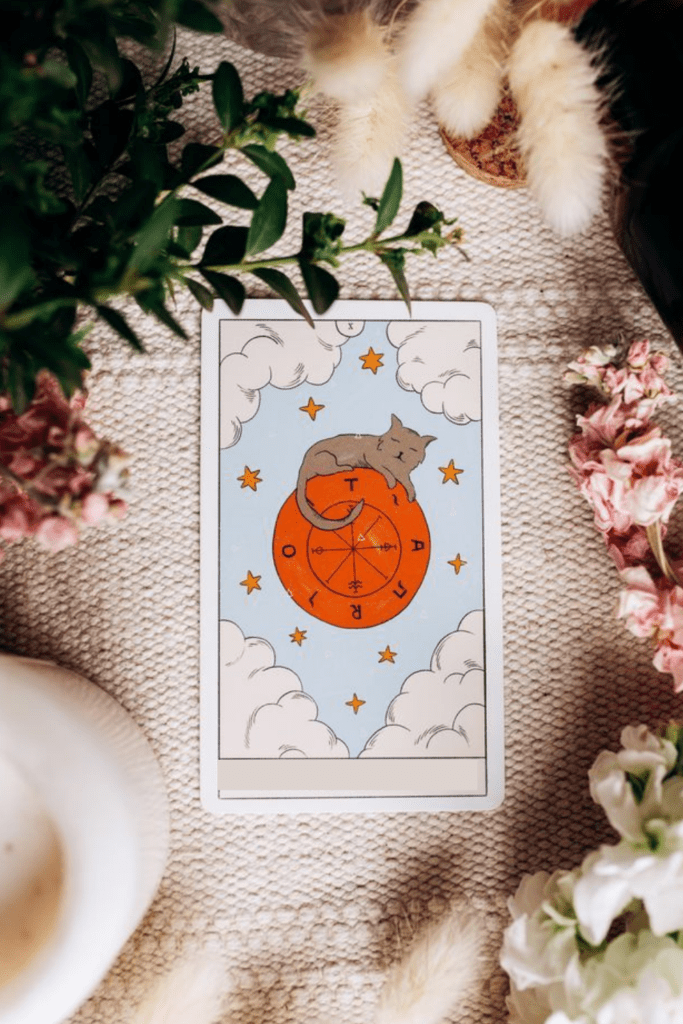
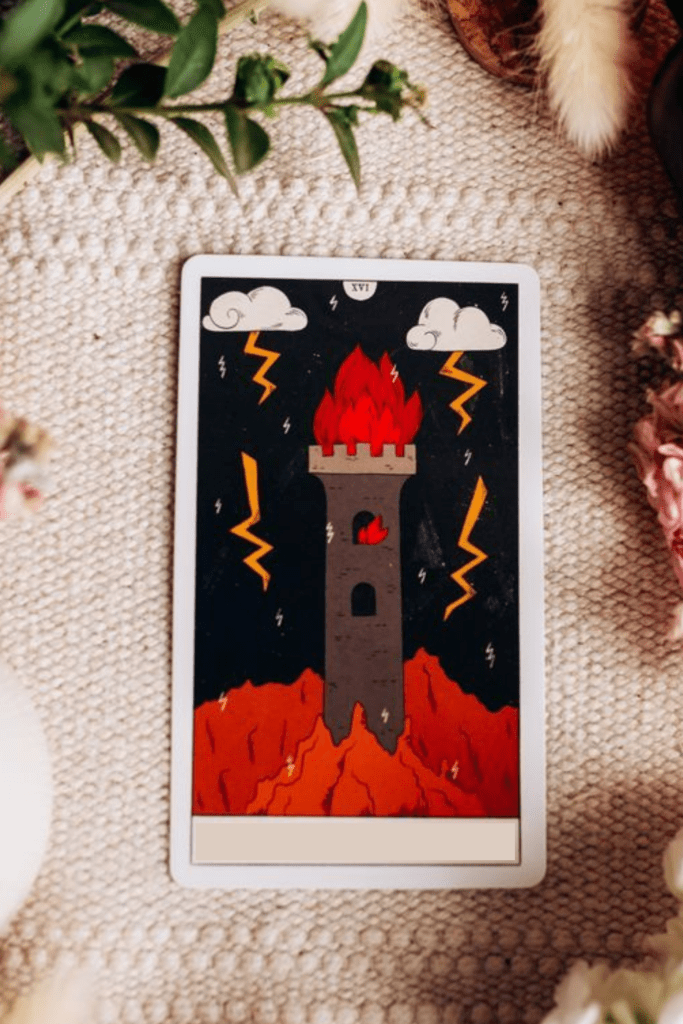
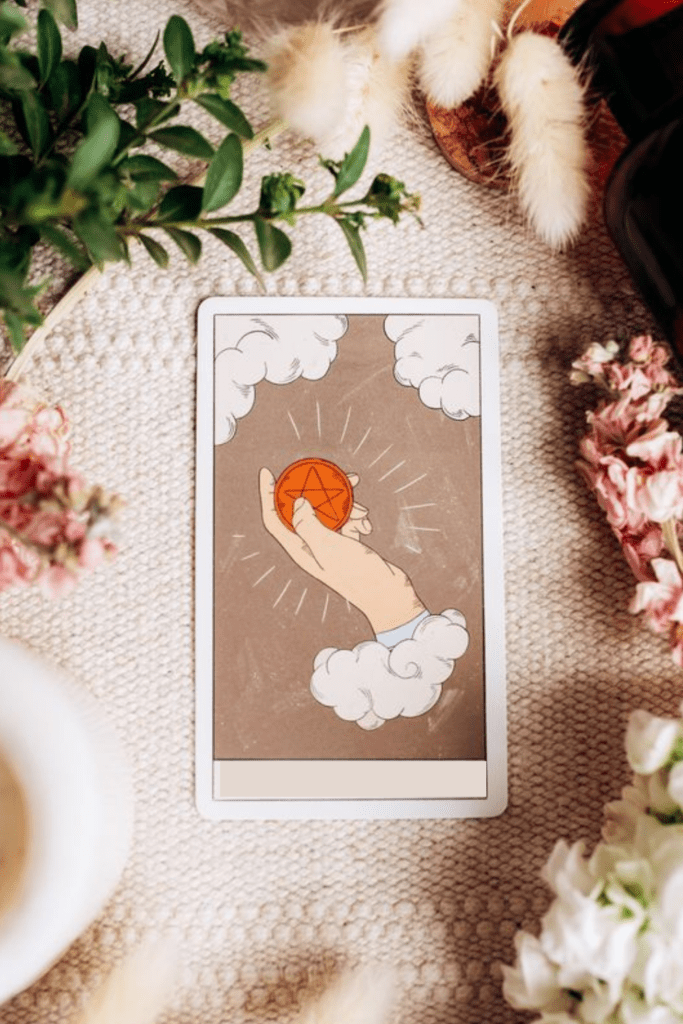
The Minor Arcana Cards and Their Meanings
The Minor Arcana cards are divided into four suits: Wands, Cups, Swords, and Pentacles.
Each suit represents a different aspect of life and carries its unique meanings and interpretations.
The Wands suit represents creativity, passion, and ambition.
The Cups suit represents emotions, relationships, and intuition.
The Swords suit represents thoughts, communication, and challenges.
The Pentacles suit represents material possessions, abundance, and practicality.
Each suit consists of ten numbered cards and four court cards: Page, Knight, Queen, and King.
The numbered cards represent different stages or aspects of the suit's theme, while the court cards represent different personalities or archetypes.
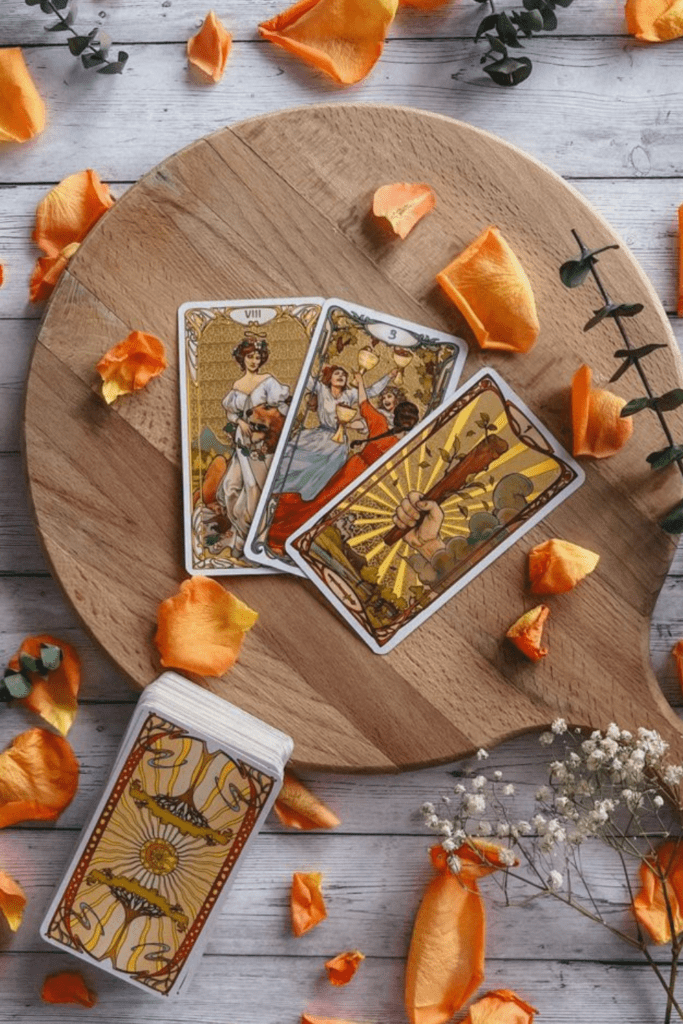
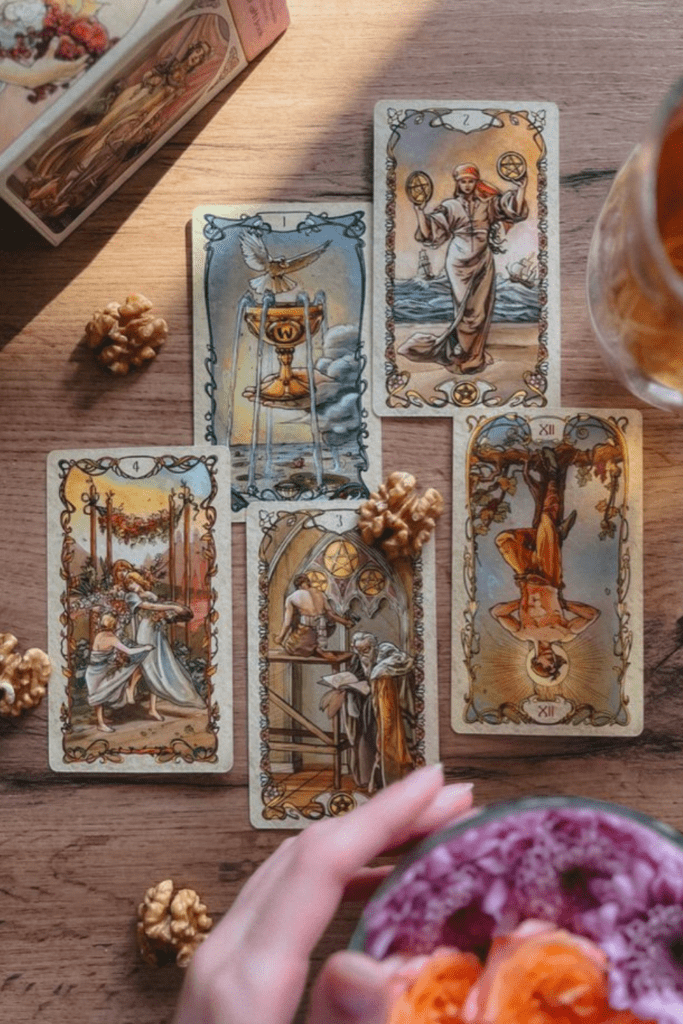
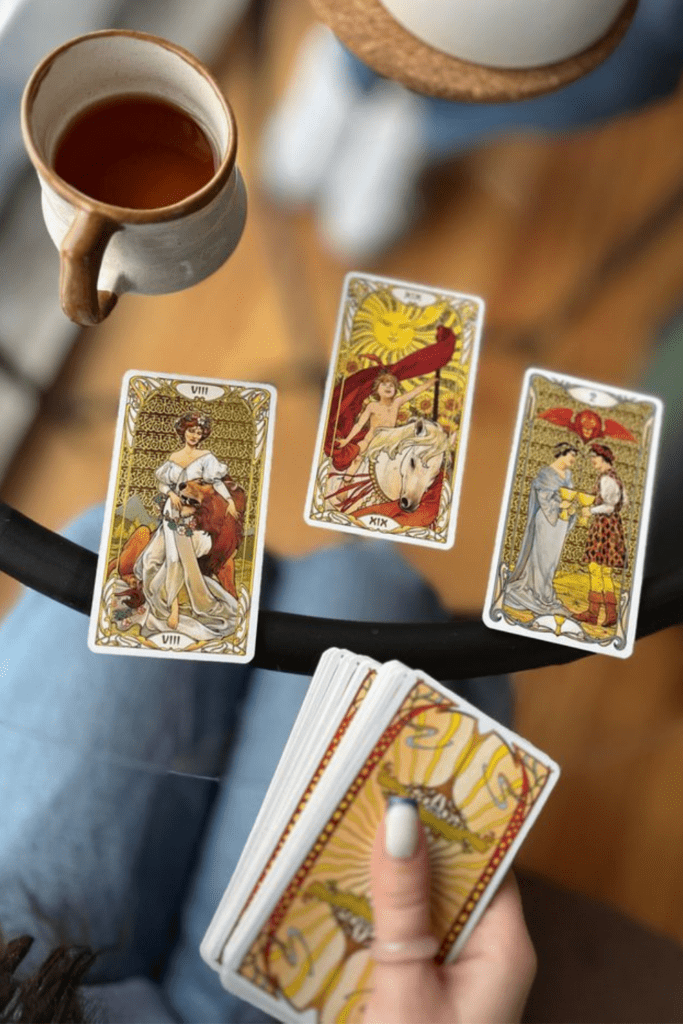
The Court Cards and Their Meanings
The Court cards in tarot represent different personalities or archetypes.
They can represent people in your life or aspects of your own personality.
Understanding the meanings of the Court cards can provide insight into the dynamics and relationships in a tarot reading.
The Page cards represent youth, curiosity, and new beginnings.
The Knight cards represent action, movement, and ambition. The Queen cards represent nurturing, intuition, and emotional intelligence.
The King cards represent leadership, authority, and mastery.
How to Conduct a Tarot Reading with Symbolic Cards
Conducting a tarot reading with Symbol cards involves several steps. Here is a step-by-step guide to conducting a tarot reading with Symbolic cards:
1. Prepare your space: Find a quiet and comfortable space where you can focus on the reading. Clear any distractions and create a sacred space for the reading.
2. Shuffle the cards: Take the Symbolon cards and shuffle them thoroughly. This helps to infuse your energy into the cards and create a connection with them.
3. Set your intention: Before starting the reading, set your intention for what you want to gain from the reading. This could be clarity, guidance, or insight into a specific situation.
4. Choose a spread: Select a tarot card spread that resonates with your intention and the question or situation you want to explore. There are many different spreads to choose from, such as the Celtic Cross spread or the Three-Card spread.
5. Lay out the cards: Place the cards in the chosen spread, following the specific positions and meanings of each card.
6. Interpret the cards: Begin interpreting the cards based on their individual meanings and their positions in the spread. Pay attention to the symbolism and any intuitive insights that come up.
7. Reflect and integrate: After completing the reading, take some time to reflect on the messages and insights gained. Consider how they relate to your current situation and how you can integrate them into your life.

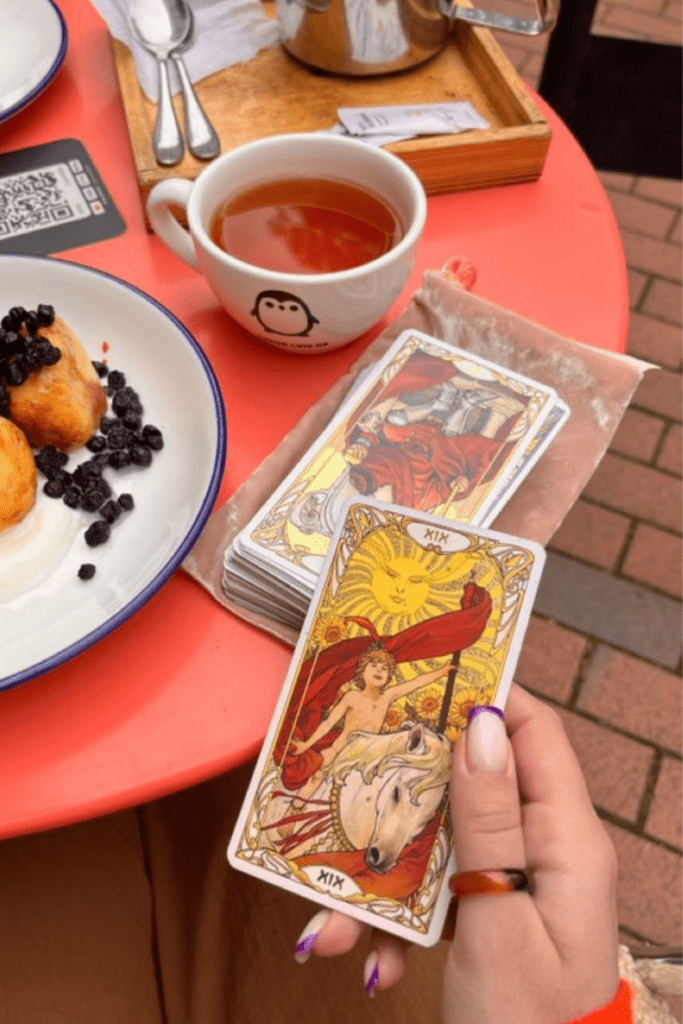
Tips for Interpreting Tarot Card Combinations
Interpreting multiple tarot cards in a reading can be challenging but also rewarding. Tarot card combinations can provide deeper insights and a more nuanced understanding of a situation. Here are some tips for interpreting tarot card combinations:
1. Look for patterns: Notice any patterns or similarities between the cards. This could be similar to symbols, colors, or themes. These patterns can provide clues about the overall message of the reading.
2. Consider the positions: Pay attention to the positions of the cards in the spread. Each position may have a specific meaning or influence on the interpretation of the cards.
3. Trust your intuition: Allow your intuition to guide you in interpreting the card combinations. Trust your gut feelings and any intuitive insights that come up during the reading.
4. Use a tarot card guidebook: If you are new to tarot card readings, using a tarot card guidebook can be helpful. These guidebooks provide interpretations and meanings for different card combinations.
5. Practice, practice, practice: Interpreting tarot card combinations takes practice. The more you practice, the more comfortable and confident you will become in interpreting the cards.
Common Tarot Card Spreads
There are many different tarot card spreads to choose from when using Symbolon cards. The choice of spread depends on the question or situation you want to explore. Here are some popular tarot card spreads for Symbolon cards:
1. Celtic Cross Spread: This is one of the most well-known tarot card spreads. It consists of ten cards and provides a comprehensive overview of a situation or question.
2. Three-Card Spread: This simple spread consists of three cards and is great for quick insights or yes/no questions.
3. Past-Present-Future Spread: This spread consists of three cards and provides insights into the past, present, and future aspects of a situation.
4. Relationship Spread: This spread is specifically designed to explore relationships and can provide insights into the dynamics and challenges within a relationship.
5. Decision-Making Spread: This spread is helpful when faced with a decision or choice. It can provide guidance and clarity on the best course of action.
How to Use Tarot Cards for Self-Reflection and Personal Growth
Tarot cards can be a powerful tool for self-reflection and personal growth.
They can provide insights into your thoughts, emotions, and behaviours, allowing you to gain a deeper understanding of yourself. Here are some tips for using tarot cards for self-reflection:
1. Set an intention: Before starting a self-reflection reading, set an intention for what you want to explore or gain insight into. This could be a specific area of your life or a particular question you have.
2. Journaling: After completing a tarot card reading, take some time to journal about the insights and messages you received. Write down any thoughts, feelings, or actions that come up as a result of the reading.
3. Meditate: Use the tarot cards as a focal point for meditation. Choose a card that resonates with you and spend some time meditating on its symbolism and message. Allow any insights or intuitive guidance to come up during the meditation.
4. Daily card pulls: Pull a card each day and reflect on its meaning and how it relates to your current situation or mindset. This daily practice can help you develop a deeper connection with the cards and yourself.
5. Seek guidance: If you are struggling with a particular issue or need guidance, use the tarot cards to seek insight and clarity. Ask specific questions and allow the cards to provide guidance and support.
The Power of Symbol In Tarot Cards On Your Life
Learning how to read tarot cards, can have a profound impact on your life.
Tarot cards are not just tools for divination but also tools for self-reflection, personal growth, and spiritual development.
By understanding the symbolism in tarot cards, developing your intuition, and choosing the right deck for you, you can unlock the power of tarot in your life.
Tarot Cards, with their rich symbolism and deep meanings, can provide profound insights and guidance.
By learning the meanings of the Major Arcana cards, Minor Arcana cards, and Court cards, you can gain a deeper understanding of yourself and the world around you.
By conducting tarot readings with Symbolon cards, interpreting card combinations, and using tarot spreads, you can tap into the wisdom of the cards and gain clarity and guidance.
Incorporating tarot cards into your daily life can be a transformative practice.
By using tarot cards for self-reflection and personal growth, you can gain insights into your thoughts, emotions, and behaviours.
Tarot cards can serve as a mirror, reflecting back to you the aspects of yourself that need attention and healing.
By embracing the power of Symbolon Tarot Cards, you can embark on a journey of self-discovery and transformation.

Connecting with Your Intuition Through Oracle Card Readings
In today's fast-paced and chaotic world, it can be challenging to find moments of stillness and clarity.
We often find ourselves overwhelmed with decisions and unsure of which path to take.
This is where connecting with our intuition becomes crucial. Intuition is our inner guidance system, a deep knowing that comes from within.
It can provide us with valuable insights and help us make decisions that align with our true selves.
One powerful tool for connecting with intuition is Oracle card readings.
Introduction to Oracle Card Readings
Oracle cards are a divination tool that can provide guidance and insight into various aspects of our lives.
They are similar to tarot cards but have their own unique characteristics.
Oracle cards typically consist of a deck of cards, each containing a different image or message.
These cards are designed to tap into our intuition and provide us with guidance and clarity.
The history of oracle cards dates back centuries, with various cultures using different forms of divination tools to seek guidance.
Oracle cards have evolved over time and are now widely used by individuals seeking spiritual guidance and personal growth.
There are different types of oracle cards available, each with its own theme and purpose.
Some decks focus on love and relationships, while others delve into personal growth or career guidance.
The variety of decks allows individuals to choose one that resonates with their specific needs and interests.
Understanding Intuition and its Importance In Oracle
Intuition is often described as a gut feeling or a hunch. It is a deep knowing that comes from within, beyond logical reasoning or analysis.
Intuition can guide us in making decisions that align with our true selves and lead us towards our highest good.
In today's society, we are often encouraged to rely solely on logic and reason when making decisions. However, intuition plays a vital role in decision-making.
It can provide us with insights that logic alone cannot offer.
Oracle card readings can help us connect with our intuition by providing a visual representation of our inner guidance.
The images and messages on the cards can trigger intuitive insights and help us tap into our subconscious mind.
By using oracle cards, we can access our intuition more easily and make decisions that are in alignment with our true selves.
How Oracle Cards Work
Oracle cards work by tapping into our intuition and providing us with guidance and insights.
Each card in the deck contains a different image or message that is meant to trigger intuitive insights.
To use Oracle cards, you first need to set an intention for your reading.
This can be a specific question or a general area of your life that you would like guidance on.
Once you have set your intention, you shuffle the deck and choose a card or multiple cards, depending on the spread you are using.
Different spreads can be used to provide different types of guidance.
For example, a simple three-card spread can provide past, present, and future insights, while a more complex spread can provide guidance on specific areas of your life.
Once you have chosen your cards, you can begin interpreting their meanings. This is where your intuition comes into play.
Trusting your intuition and allowing it to guide you in interpreting the cards is crucial. The meanings of the cards can vary depending on the deck you are using, so it is important to familiarize yourself with the specific meanings of each card in your chosen deck.
Choosing the Right Oracle Deck for You
When choosing an Oracle deck, there are several factors to consider.
First, consider the theme or purpose of the deck.
Do you want guidance on love and relationships, personal growth, or career? Choose a deck that aligns with your specific needs and interests.
Next, consider the artwork and imagery of the deck. The images on the cards should resonate with you and evoke a sense of connection. Look for decks that have artwork that speaks to you on a deep level.
It is also important to consider the size and feel of the cards. Some decks have larger cards, while others have smaller ones.
Choose a size that feels comfortable for you to handle and shuffle.
Popular oracle decks include "The Wild Unknown" by Kim Krans, "The Wisdom of the Oracle" by Colette Baron-Reid, and "The Sacred Rebels Oracle" by Alana Fairchild.
These decks cover a range of themes and are widely loved for their beautiful artwork and insightful messages.
Preparing for a Reading: Setting Intentions and Creating a Sacred Space
Before conducting an oracle card reading, it is important to set intentions for your session. This can be done by asking yourself what specific guidance or insights you are seeking. By setting clear intentions, you create a focused energy that will guide your reading.
Creating a sacred space for your reading is also important. This can be a quiet and peaceful area where you feel comfortable and relaxed. You can enhance the energy of your space by lighting candles, burning incense, or playing soft music. Creating a sacred space helps to create a sense of ritual and allows you to connect more deeply with your intuition.
During a reading, you may also choose to use additional tools such as crystals or essential oils to enhance the energy and create a more powerful experience. These tools can help to amplify your intentions and provide additional support during your reading.
The Art of Asking Questions: Formulating Clear and Specific Inquiries
When conducting an Oracle card reading, the questions you ask are crucial.
It is important to ask clear and specific questions that will provide you with the guidance you are seeking.
Clear and specific questions allow for more accurate and insightful readings.
Vague or open-ended questions may result in unclear or confusing answers.
For example, instead of asking, "What does my future hold?" you could ask, "What steps can I take to create a fulfilling career?"
Good questions are focused and specific, allowing the cards to provide you with clear guidance.
They should also be open-ended, allowing for a range of possible answers. Avoid asking yes or no questions, as they limit the depth of insight you can receive.
Interpreting the Cards: Trusting Your Intuition and Developing Your Reading Skills
Interpreting oracle cards requires a combination of intuition and knowledge of the specific meanings of the cards in your chosen deck.
Trusting your intuition is crucial during a reading, as it allows you to tap into your inner guidance and receive the messages that are meant for you.
When interpreting the cards, pay attention to any intuitive insights or feelings that arise.
The images and messages on the cards may trigger specific emotions or thoughts that are relevant to your situation.
Trusting these insights and allowing them to guide your interpretation will provide you with the most accurate and insightful readings.
Developing your reading skills takes time and practice. The more you work with your chosen deck, the more familiar you will become with the meanings of the cards and how they relate to different situations.
Over time, you will develop a deeper connection with your intuition and be able to provide more detailed and accurate readings.
Common Symbols and Meanings in Oracle Cards
Oracle cards often contain symbols that carry specific meanings.
Understanding these symbols can enhance your interpretation of the cards and provide deeper insights into your readings.
Common symbols in oracle cards include animals, elements of nature, numbers, and colors.
Each symbol carries its own unique meaning and can provide additional layers of guidance in reading.
For example, a card featuring a butterfly may symbolize transformation and growth, while a card featuring a mountain may symbolize challenges and obstacles.
When interpreting symbols in a reading, pay attention to any intuitive insights or feelings that arise.
Trust your intuition to guide you in understanding the deeper meanings behind the symbols and how they relate to your specific situation.
Using Oracle Cards for Self-Discovery and Personal Growth
Oracle cards can be powerful tools for self-discovery and personal growth.
They can provide insights into our subconscious mind and help us uncover hidden beliefs or patterns that may be holding us back.
When using oracle cards for self-discovery, it is important to ask questions that are focused on personal growth and understanding.
For example, you could ask, "What limiting beliefs are holding me back from achieving my goals?" or "What steps can I take to cultivate self-love and acceptance?"
By asking these types of questions, you can gain valuable insights into yourself and your journey.
The cards can provide guidance on areas where you may need to focus your attention or make changes in order to grow and evolve.
Incorporating Oracle Card Readings into Your Spiritual Practice
Oracle card readings can be a powerful addition to your spiritual practice.
They can provide guidance and support as you navigate your spiritual journey and seek deeper understanding of yourself and the world around you.
To incorporate oracle card readings into your spiritual practice, set aside dedicated time for readings. This can be a daily or weekly practice, depending on your preference.
Create a sacred space for your readings and set clear intentions for each session.
Regular Oracle card readings can help you stay connected to your intuition and receive ongoing guidance and support.
They can also serve as a reminder to trust the journey and embrace the unknown.
Finding a Community: Joining Oracle Card Reading Groups and Workshops
Joining an Oracle card reading community can provide valuable support and guidance as you explore this practice.
Connecting with like-minded individuals who share your interest in Oracle cards can enhance your learning and provide a sense of community.
There are many online communities and social media groups dedicated to Oracle card readings.
These groups often share tips, insights, and experiences related to Oracle card readings. They can also provide a platform for asking questions and receiving guidance from more experienced readers.
In addition to online communities, consider attending workshops or classes on Oracle card readings. These workshops can provide hands-on experience and guidance from experienced teachers. They can also provide an opportunity to connect with others who share your interest in Oracle cards.
Conclusion: Embracing Your Intuition and Trusting the Journey
In conclusion, connecting with our intuition is crucial in navigating life's challenges and making decisions that align with our true selves.
Oracle card readings can be a powerful tool for connecting with our intuition and receiving guidance and support.
By setting clear intentions, creating a sacred space, and trusting our intuition, we can tap into the wisdom of the cards and receive valuable insights.
With practice and dedication, we can develop our reading skills and deepen our connection with our intuition.
Embracing our intuition and trusting the journey allows us to live a more authentic and fulfilling life.
Oracle card readings can serve as a reminder to trust ourselves and the guidance that comes from within.
As we embrace our intuition, we open ourselves up to new possibilities and a deeper understanding of ourselves and the world around us.

The Pros and Cons of Tarot and Oracle Cards: Which One Wins?
Tarot and Oracle cards have been used for centuries as tools for divination and self-discovery.
The history of tarot cards can be traced back to the 15th century in Europe, where they were originally used for playing games.
Over time, they evolved into a tool for divination, with each card representing a different aspect of life and offering insights into the past, present, and future.
Oracle cards, on the other hand, have a more recent history and are not as structured as tarot cards.
They can come in various themes and designs, and their meanings are often more open to interpretation.
Oracle cards are often used for more specific questions or guidance, and they can provide a more intuitive and personal reading.
Both tarot and oracle cards can be used as tools for self-reflection and personal growth.
They can offer guidance, clarity, and insight into various aspects of life, including relationships, career, and spirituality.
Understanding the Differences Between Tarot vs Oracle Cards
While both tarot and oracle cards are used for divination, there are some key differences between the two.
Tarot cards have a structured system with 78 cards, divided into two main categories: the Major Arcana and the Minor Arcana.
The Major Arcana consists of 22 cards that represent major life events and archetypal energies.
The Minor Arcana consists of 56 cards divided into four suits (Wands, Cups, Swords, and Pentacles), each representing different aspects of life.
Tarot cards have specific meanings associated with each card, which can provide a comprehensive reading.
On the other hand, oracle cards have a more flexible system.
They can come in varying numbers of cards, ranging from 44 to 100 or more. Each deck of oracle cards has its own theme or focus, such as angels, animals, or nature.
The meanings of oracle cards are often more open to interpretation and can vary depending on the deck and the reader.
Oracle cards are often used for more specific questions or guidance, and they can provide a more intuitive and personal reading.
Pros of Tarot Cards: Deep Insight and Symbolism
One of the main advantages of tarot cards is the deep insight and symbolism they offer.
Each card in the tarot deck has its own unique meaning and symbolism, which can provide a rich and layered reading.
The imagery on the cards can evoke powerful emotions and offer a deeper understanding of a situation or question.
The structured system of tarot cards also allows for a comprehensive reading.
The different suits and cards in the tarot deck represent different aspects of life, such as emotions, thoughts, actions, and material possessions.
This allows for a more holistic approach to divination, as the reader can explore various aspects of a situation or question.
Cons of Tarot Cards: Complexity and Misinterpretation
One of the main challenges of tarot cards is their complexity.
With 78 cards and specific meanings associated with each card, learning and interpreting tarot cards can be a daunting task.
It requires time, practice, and dedication to become proficient in reading tarot cards.
Misinterpretation of tarot cards can also be a challenge. Each card has multiple layers of meaning, and it can be easy to misinterpret or misread a card.
This can lead to confusion and inaccurate readings. It is important for the reader to have a deep understanding of the symbolism and meanings of each card to avoid misinterpretation.
Pros of Oracle Cards: Simplicity and Clarity
One of the main advantages of oracle cards is their simplicity. Unlike tarot cards, which have a structured system with specific meanings, oracle cards are often simpler to use and interpret. The meanings of oracle cards are often more open to interpretation, allowing the reader to tap into their intuition and personal insights.
The themes of oracle cards can also provide clear and direct guidance. Each deck of oracle cards has its own theme or focus, such as angels, animals, or nature. This allows the reader to choose a deck that resonates with them and provides guidance in a specific area of life. The clear and direct messages of oracle cards can offer clarity and guidance in a more straightforward manner.
Cons of Oracle Cards: Limited Symbolism and Interpretation
One of the main limitations of oracle cards is their limited symbolism. Unlike tarot cards, which have rich and layered symbolism, oracle cards often have simpler imagery and meanings.
This can make them less nuanced and less able to provide deep insights into a situation or question.
The flexibility of Oracle cards can also be a challenge. With their open-ended meanings, oracle cards can be more open to interpretation, which may not always be accurate.
The reader must rely on their intuition and personal insights to interpret the cards, which can be subjective and may not always provide accurate guidance.
How to Choose Between Tarot and Oracle Cards
When choosing between tarot and oracle cards, there are several factors to consider:
1. Consider your level of experience with divination tools. If you are new to divination, oracle cards may be a good starting point, as they are often simpler to use and interpret. If you have some experience with divination and are willing to invest time in learning and interpreting tarot cards, they can provide a more comprehensive reading.
2. Think about the type of guidance you are seeking. If you are looking for deep insights and a comprehensive reading, tarot cards may be the better choice. If you are looking for clear and direct guidance in a specific area of life, oracle cards may be more suitable.
3. Consider the themes and symbolism that resonate with you. Tarot cards have a wide range of themes and symbolism, allowing you to choose a deck that resonates with you. Oracle cards also have various themes, so you can choose a deck that aligns with your interests and preferences.
Tips for Using Tarot and Oracle Cards Effectively
Regardless of whether you choose tarot or oracle cards, here are some tips for using them effectively:
1. Set a clear intention before using the cards. Take a moment to think about what you want to gain from the reading and set a clear intention. This will help focus your energy and guide the reading.
2. Take time to connect with the cards and your intuition. Before starting the reading, take a few moments to connect with the cards and your intuition. Shuffle the cards and hold them in your hands, allowing your energy to flow into the cards. Trust your intuition and let it guide you as you interpret the cards.
3. Keep a journal to track your readings and insights. Keeping a journal can be a valuable tool for tracking your readings and insights. Write down the cards you pulled, the meanings you assigned to them, and any insights or messages that come up during the reading. This will help you track your progress and reflect on your readings over time.
Combining Tarot and Oracle Cards: The Best of Both Worlds
Using both Tarot and Oracle cards can provide a more comprehensive reading.
By combining the deep symbolism of tarot cards with the clear guidance of oracle cards, you can take advantage of the strengths of both systems.
Start by pulling a few tarot cards to gain insights into the overall situation or question.
Then, pull an oracle card to provide clear and direct guidance or to offer a specific message.
This combination allows for a more balanced approach to divination, providing both depth and clarity in the reading.
Conclusion: Which One Win? It Depends on Your Needs and Preferences.
There is no one-size-fits-all answer to whether tarot or oracle cards are better. Both have their own strengths and limitations, and it ultimately depends on your personal preferences and the type of guidance you are seeking.
If you are looking for deep insights and comprehensive reading, tarot cards may be the better choice. If you are looking for clear and direct guidance in a specific area of life, oracle cards may be more suitable.
Ultimately, the most important thing is to choose a tool that resonates with you and allows you to tap into your intuition and personal insights.
